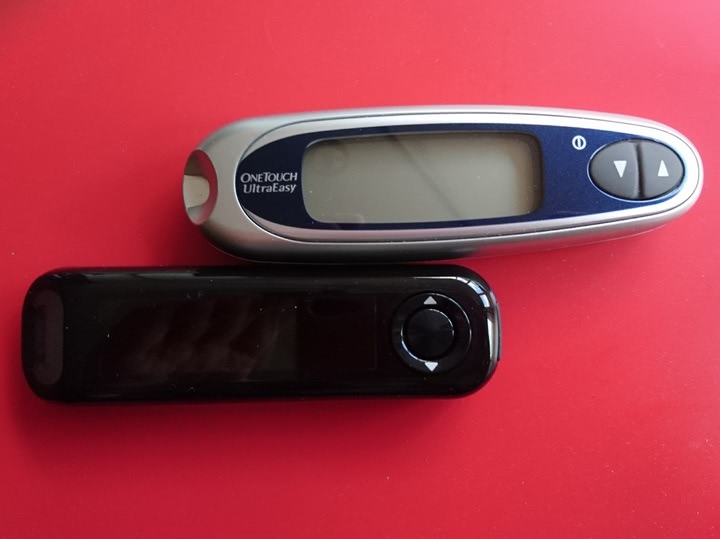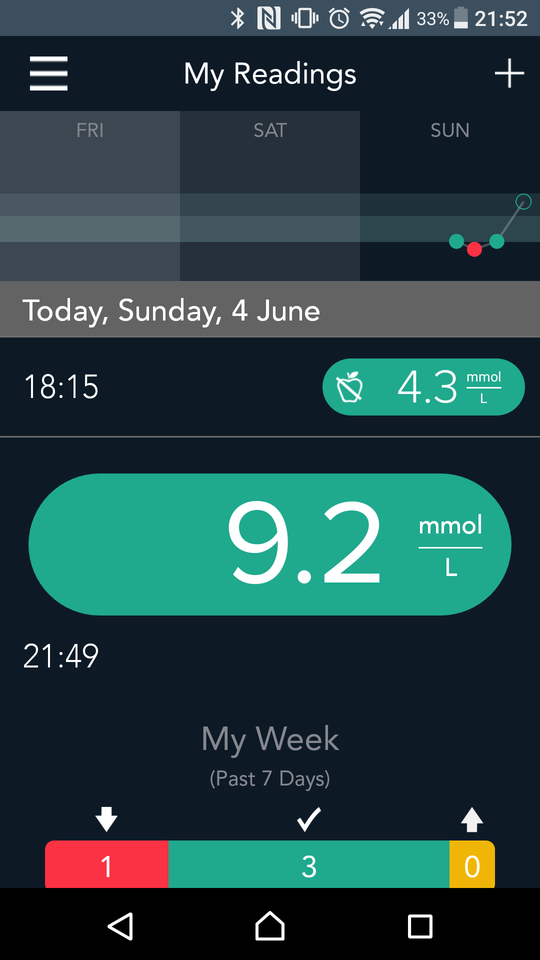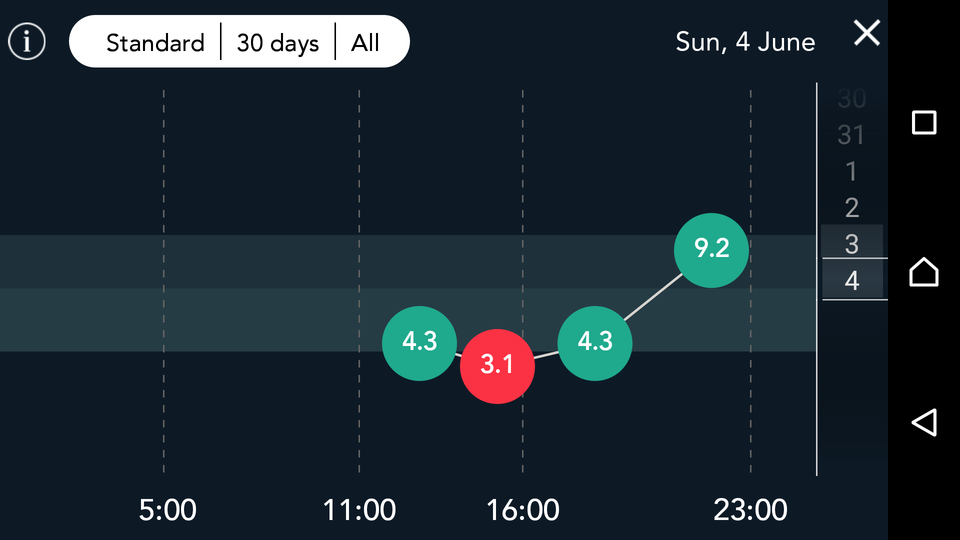In my current quest for documenting glucometer protocols and implementing tooling to download data I ended up ordering myself a Contour Next One glucometer, currently marketed by Ascensia Diabetes Care, but originally developed by Bayer (to the point that devices and manuals still mostly refer to Bayer).
The Contour Next One is marketed as a smart glucometer that can connect to an app on a smartphone, as it supports Bluetooth Low Energy. I have not tried that yet because I already have an app I care about on the phone. In addition to that the physical device is very small, but includes a nice, complete and bright display, a three way buttons, a coloured LED for the strip port device, and a beeper.
The size of the device reminds me closely the OneTouch Ultra Mini, which is quite favourable, as every other device I have is significantly bulkier, and for the most part using a different form factor that I don’t particularly enjoy.

The strip port has a coloured LED as I said, and it’ll be white to tell you where to insert the strip, and then turn either green or red depending on the value. You can associate one out of three states for meal information, represented by an apple (why is it always an apple?) crossed out (fasting), full (before meal) or taken two bites of (after meal).
If there is one thing that I can complain about is that the first-time setup is a bit tricky. I have received the meter a couple of months ago, but since I’ve been travelling so much, I have not managed to try it out until earlier this month. When I finally put the strip into the device, and provided blood to it, I found it wanted to confirm date, time and settings… and did not actually give me a result, oops!
On the practicality, the device is really the kind of size I’d like to keep around, if it wasn’t for the fact I switched to the Libre. While it is not all-in-one like the Accu-Chek Mobile, it is small and compact, and looks sleek for a device.
I have installed the Irish app – it seems they have separate app entries for multiple countries, although it does not appear to have country limitations, as I could ask for it to be installed on my Italian SIM device – the first thing it asked me was the country or region, and Ireland was not in the visible list. Turns out the problem is that the list is actually very long and the app’s scrolling is misconfigured, as scrolling up appears to only scroll a third of a row at a time, so scrolling down to Ireland takes quite a while. For United Kingdom I don’t even want to consider the idea. Looks like Ascensia does have some rough edges with testing the first-time setup of their systems.

The setup process is a bit bothersome, if what you want to do is just downloading the data. It tries to convince you to set up an account to back up your data (this appears to be more and more common), and then it goes through give or take the same first-time setup as happens on the meter. In addition to the meter’s own settings, it also allows you to define time bands to divide your meals into breakfast, lunch and dinner, which I liked: instead of just assuming, it asks you to confirm the expected ranges.
There is also a request to configure two phone numbers: the local emergency number, and a personal emergency contact, so that if you have a low-blood-sugar event you can make a call directly. While the idea is interesting on principle, since it already asked me for my region I wonder why it can’t just default to 999. Finding the contact by name in the list is also extremely hard because of the scrolling issue above. I ended up just typing my own name and phone number, as there is never anyone who could actually help me if I have a sugar low, and the request is unskippable.
The app itself appears very simple, showing by default your last reading and a small graph of your recent readings. If you turn your phone or click on the graph, a more detailed (but still rough) graph appears:

The probably most interesting thing about this the app is that if you take a reading on your meter it will be “pushed” to the device, and appear in real-time. It also allows you to set the markings and a number of comments straight from the app, well exceeding the amount of details that the device can set for you, particularly given it’s a three-buttons device.
It reminds me of the iHealth Align but in a much less clumsy way. It also requires significantly less bother with the strips, and there is no validation of when the bottle was open or whether the strips expired, which makes it probably a better choice for those people who only test occasionally.
On more technical sides, the device uses two CR2032 batteries, which while beefier than the iHealth, need to sustain a full BLE connection – which by the way I couldn’t figure out how to turn off at first try – and are at the same time easier to find replacements for (though not as easy as the AAA batteries used by more clunky meters). It has a micro USB connector on the back, behind a rubber seal, and it uses an HID-based protocol to communicate. I’m halfway through reversing and documenting it of course.
